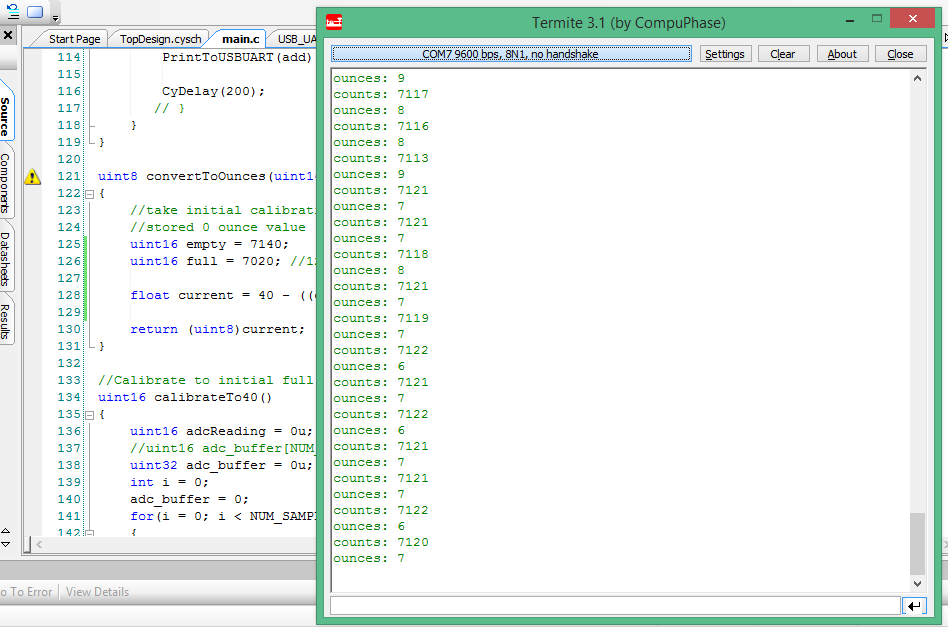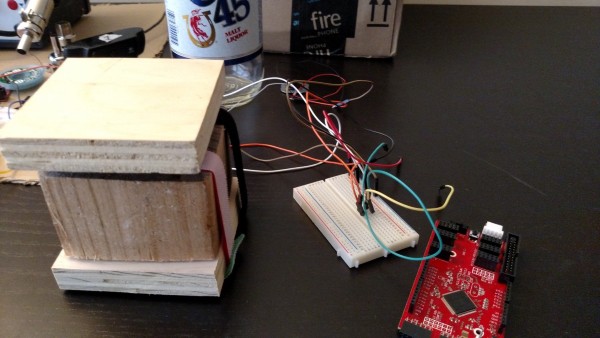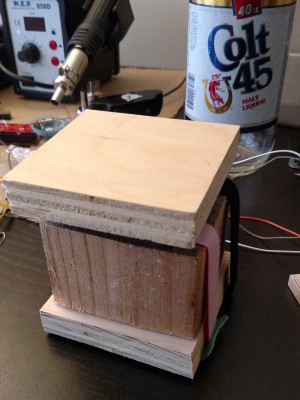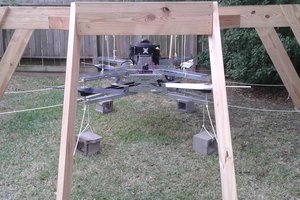For our prototype we are making use of 4 load cells from a digital kitchen scale, along with a PSoC for measuring the load cells and USB HID output to the computer. The load cells will be used to determine how much liquid is left in your drink. This information will then be relayed to the computer. The PSoC board will appear to be a standard HID game controller on your computer, allowing it to interact with any game that supports controllers and mods.
For our first game we will be making a mod for Killing Floor, a wave based coop survival shooter. As a coop game it's the perfect example of a game enhanced by showing who is pulling their own weight beyond just kills. We plan to have new overlay in Killing floor that shows how many ounces you have left in your drink right next to where you currently see your teammates's health and armor bars. This will let you see if your teammates are falling behind at a glance, even if they are physically across the country from you! In addition, we plan to add possible powerups, or the inability to kill the final boss, depending on how well you are doing with your drink. This adds a whole new dynamic to gameplay that's never been done before.
We call this new gametype "Killing 40's" and it is just the first of many, coming straight to your favorite games.
 High Gravity Solutions
High Gravity Solutions






 Peter McCloud
Peter McCloud
 helge
helge
 Evgeniy An
Evgeniy An
 Anders Hjelm
Anders Hjelm